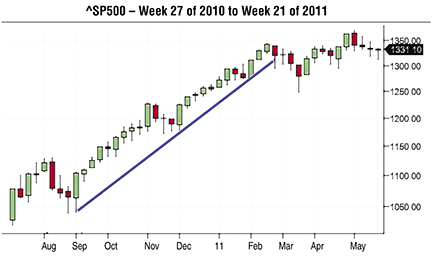
FIGURE 1: WEEKLY CHART OF S&P 500 (JULY 2010 TO MAY 2011). Here you can see that a clear trend is present from September 2010 to February 2011.
CYCLES
Trends Within Cycles
It’s easier to gain from trending markets than choppy or cyclical market movements. But you can detect trends from a cyclical perspective.
Identifying trends in prices is nothing new; these days, technical analysts and traders develop various methods for detecting trends, trying to determine what is trending now and what may trend in the future. Behind such interest in trends is a desire for an easy profit, since it is much easier to gain from a trend than it is from choppy or cyclical market movements. There are many ways to detect trends, and in this article I will examine one such method: looking at a trend from a cyclical perspective.
What is a trend?
The traditional definition of a trend is a directional movement of prices long enough to be identified and tradable. In Figure 1, you will see a graphical representation of a trend in the weekly chart of the Standard & Poor’s 500.

FIGURE 1: WEEKLY CHART OF S&P 500 (JULY 2010 TO MAY 2011). Here you can see that a clear trend is present from September 2010 to February 2011.
In my April 2011 Stocks & Commodities article, I stated that the mathematical methods used in electrical engineering to describe signal wave forms can be used for market price data analysis. From a cyclical perspective, a trend is a long cycle of a given period, whether known or unknown. The length of the cycle is relative to the cycle under review.